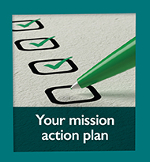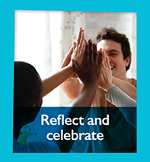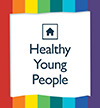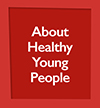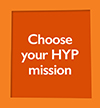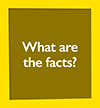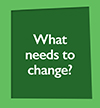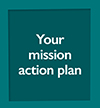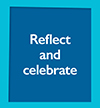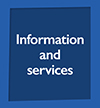For schools and services
Healthy Young People (HYP) is a free resource promoting positive body image, adequate sleep, healthy eating, water consumption, physical activity and reduced sedentary time. The HYP Missions aim to develop young people’s health literacy to support lifelong health and prevent chronic diseases.
Top reasons to use HYP with young people:
- Meet requirements of The Australian Curriculum
- Completing the HYP Missions will help you implement a whole-school-approach to Wellbeing in line with the Department for Education, Children and Young People's Child and Student Wellbeing Strategy.
- Inform your practice with student voices and empower young people. The HYP resources encourage young people to take the lead in making changes to make healthy choices easy in the school and in their own lives.
- Build health literacy and provide young people with skills for life.
- Be evidence informed. HYP was developed in partnership with schools with input from health and education experts.
- Save time with activities and thinking tools that are ready to go! Access online or download. Students can self-direct their learning or you can use the resources as lesson plans.
- Flexible learning resources that you can tailor to suit your needs.
The resources below are aimed at secondary school teachers and school staff, youth workers, social workers and anyone who works with young people.
How to use HYP
Healthy Young People is an inquiry-based program, where young people are supported to take the lead in making healthy choices easier at school.
Rather than telling young people what they need to do to be healthy, HYP aims to empower young people by giving them the authority to create change. By giving young people a voice and engaging them as partners for creating change, HYP aims to increase young people’s agency and create positive life-long health and learning habits.
The HYP Missions
Running the complete program involves working with groups of young people to complete one of seven Missions. We recommend that young people work in a team of four or five to complete the Mission steps. If you are working with more than one group, decide whether all teams are going to work towards the same Mission or if each team will complete a different Mission. If more than one group is focussing on the same Mission, they can focus on different strategies to make healthy choices easier.
The seven Missions are:
Make Water the Main Drink
This mission is about making it easy for people to choose water as the main drink at school and helping people recognise the many benefits of drinking water.
We Respect Every Body
This mission is about how people think and feel about themselves. How we think and feel about our bodies is strongly influenced by what's going on around us.
This mission is about making it easy and normal for people at school to accept the physical differences between people, so that people feel good about their bodies and respect differences in other people's bodies.
Make healthy food the main food
This mission is about making it easy for people to choose healthy food as the main food at school, and helping people recognise the benefits of making healthy food the main food.
We log enough sleep
This mission is about making it easier for people to log enough sleep every night, and helping people recognise the many benefits of getting enough sleep.
Stand Up, Sit Less, Screens Down
The mission is about making it easier for people to limit recreational screen time, limit sitting time and break up long periods of sitting at school.
We work our hearts
This mission is about making it easy for people to be physically active at school and helping people recognise the many benefits of physical activity.
Choose your own Mission
This mission is about identifying a different health and wellbeing need in your school community. If you choose your own mission you will need to identify the problem and what you want people to learn, recognise, value or change.
The HYP Mission Steps
To complete the chosen Mission, there are five steps that students access via the HYP homepage
- Choose your HYP mission
- What are the facts?
- What needs to change?
- Your mission action plan
- Reflect and celebrate
Each step contains three activities to help young people investigate their Mission. See The HYP Mission Steps and Activities
All HYP Resources are available to download here
Here are some suggestions on how to run the mission steps with young people.
Option 1 – Independent learning
HYP participants work through the activities at their own pace via the website and downloadable thinking tools. We recommend this option only for students working at an A or B level.
Option 2 – Teacher/worker led
Use the activities as lesson plans to guide young people through the activities, discussions and thinking tools.
Option 3 – A combination
Use a combination of independent and teacher led learning.
- There may be some activities that young people can do at their own pace, while you may prefer to lead others and/or
- There may be some young people with the capacity to work independently while other students may need intensive support.
Option 4 – Integrate with your own curriculum
Use the structure of the Mission steps but use your own strategies or activities to achieve the goals or use some of the HYP activities as part of your existing program.
The HYP Mission Steps
| Scan and Assess » | Prioritise » | Develop and plan » | Act » | Review » |
|---|---|---|---|---|
Step 1What does health and wellbeing mean to you? What is your HYP Mission? How is your health and wellbeing? | Step 2How do you know if health information is reliable? What are the facts? What’s happening locally? | Step 3What is happening in your school? What is your dream for your school? How can you make the most difference? | Step 4What's your Mission Action Plan? How will you get others on board? Check your progress. | Step 5Did you achieve your SMART Goals? Report back. Take your Mission further. |
General Advice for Running HYP
Adapt HYP to your needs
The HYP activities are flexible and can be adapted depending on the young people you are working with. Before running HYP, complete the Audit Tool to look at what other programs, processes are already happening and how they could complement each other.
Here are some ways HYP can be adapted:
- If time is limited, it is possible to omit some of the activities while still achieving the five Mission steps.
- Substitute different strategies to achieve the same outcome. See some of our suggested Additional Activities.
- Incorporate content or learning strategies from your existing program or curriculum into the 5 mission steps OR use HYP activities within your existing programs or curriculum.
Get commitment
Commitment from leadership and staff is essential. To genuinely consult and empower young people it is important to value their input and commit to implementing their suggestions and projects.
Aim for sustainability
HYP will have the most impact on young people if the program is run regularly with multiple groups:
- Creates a continuous inquiry cycle to achieve the HYP missions.
- The program will become recognised by young people, families, staff and community
- More changes can be made to make healthy choices easier,
- Young People, families, staff and community see the value.
Provide support
Use the HYP Missions to support young people to initiate changes that make healthy choices easier:
- Support student learning and develop health literacy skills
- Support students to refine their visions and plans
- Assist students to implement strategies that help make the healthy choice the easy choice
- Not all ideas or projects will be successful. Encourage students to regard failure as an opportunity for learning and part of innovation.
Get staff involved
Don’t leave everything up to young people. Also consider what can be progressed by staff. Reynolds (2004) argued that successful school change is created when it is approached as both a top-down and bottom-up process; where the top-down processes provide strategic direction and goal setting whilst the bottom-up processes involve diagnosis and action.1 Consider what staff could do to implement a whole-school approach. For example, are there policies that can be developed to support student activities?
Running HYP in Your School
Adapt HYP to your needs
HYP recognises all schools operate differently. How your school incorporates the HYP Missions and which students you work with to achieve them, will be very dependent on the needs of your school.
There are several ways that you can use the HYP resources in your school
- Work with existing class(es) to complete all 5 Mission Steps within the HPE curriculum
- Work with existing class(es) to complete all 5 Mission Steps as an integrated curriculum unit.
- Incorporate HYP activities and resources into an existing program.
- Incorporate your existing learning strategies into the HYP Mission Steps
- Create a specific HYP class or group as an elective or lunchtime activity
- Run HYP with existing group such as student leaders or peer support program
Try using this 10-week Planning Template to plan your program:
- 10-week Planning Template [MS Word]
- 10-week Planning example [MS Word]
- 10-week Planning example [PDF}
Health and Physical Education Curriculum Outcomes
Use HYP to achieve student learning goals related to the strand of the Australian Curriculum: Health and Physical Education. See The Australian Curriculum for more detail and cross-curricular opportunities.
Personal, social and community health sub-strands and threads | HYP learning outcomes |
|---|---|
Being healthy, safe and active
| Young people will understand:
|
Communicating and interacting for health and wellbeing
| Young people will:
|
Contributing to healthy and active communities
| Young people will:
|
Running HYP with Young Leaders
Schools may choose to run HYP with a smaller group of student leaders. The HYP mission steps and activities can also be used by services who work with young people.
There may be an existing student leadership group, peer support leaders, youth reference group or working group or you could choose to develop a group of student or youth leaders specifically for HYP.
For schools, the student leaders may be senior students or students from across the grades. Using students from different grades may be a good strategy for building sustainability for achieving the HYP Missions within your school community.
Some suggestions to ensure student or youth leadership works effectively:
- A key adult/teacher needs to be provided with time to support the young people and coordinate the group. Required support may include time, guidance and assistance in implementing actions.
- The school or organisation must have a commitment to listening to young people’s voices including an intention to implement the group’s Mission Action Plan.
- Spend time developing group relationships.
- Develop clear expectations. Ensure the young people have a clear understanding of what their task is and what are the expectations and limitations of their role. You could write a “job description”, a HYP leader’s charter or even a letter to the student. It’s particularly useful if the young people themselves help to define what their role is.
Find out more about consulting with young people with resources from the Youth Network of Tasmania (YNOT) and the State-wide Youth Collaborative (SYC):
- Top Ten Tips: SYC’s Guide for Consulting with Young People
- SYC’s Consultation: A Guide for Young People
- Youth Network of Tasmania’s Youth Participation and Leadership Organisation Resource
Keeping Students Safe and Promoting Health and Wellbeing
The phrase ‘first, do no harm’ is commonly used by health professionals. It is a fundamental principle of health-care that reminds health-care providers to consider the possible harm any health intervention might do.
The phrase is also relevant to working with young people to achieve the HYP Missions. When working with young people, it is important to consider the impact that information and language can have: positive and negative; intended and unintended.
Here are some strategies for keeping young people safe and promoting health and wellbeing.
Group Agreement
When running HYP Missions and activities, it is a good idea to set up a group agreement to guide respectful discussions. Discussing health and wellbeing can be a sensitive topic for many young people.
It is helpful for the young people you are working with to create or contribute to the agreement. Encourage them to consider the following:
- Respect – what is it and how do you show respect?
- How is the group going to work together?
- Confidentiality – what is it and what should remain confidential?
Supporting positive body image
Several of the HYP Missions cover content that is related to body image. When discussing body image with young people, it is particularly important to understand and use safe practices. Be aware that some discussions and strategies can be harmful or triggering to some young people who may be vulnerable to developing disordered eating.
If you are concerned about a young person, help them access support. Eating disorders are a serious mental illness, not a lifestyle choice. Eating disorders have the highest mortality rate of all mental illnesses and early intervention is important.
Tips for supporting positive body image:
- Be a body positive role model. Use body friendly language when talking about your own body and the bodies of others. Be inclusive and demonstrate that bodies of all shapes, sizes, colours and abilities deserve respect.
- Use a positive approach to talk about eating, with a focus on balance, variety and eating according to appetite. Use the neutral terms ‘everyday’ and ‘sometimes’ when discussing food. Negative terms like ‘bad’, ‘fattening’ or ‘naughty’ can contribute to feelings of guilt about food choices.
- Encourage students to choose healthy, ‘everyday’ foods most of the time. Avoid focussing on what not to eat. According to the Australian Dietary Guidelines 2013, ‘sometimes’ foods can be included in small amounts as part of a healthy, balanced diet.
- While it’s important for students to be able to identify ‘sometimes’ foods, do not focus solely on the less desirable components of food such as the saturated fat or sugar content. Also consider the positive components such as the vitamin, mineral and fibre content.
- Try to focus on the eating patterns and foods as a whole, rather than getting tied down analysing individual nutrients.
- Focus on exploring and increasing understanding of the things that influence choices – the barriers to, and benefits of, healthy behaviours. For example, when talking about physical activity, explore what discourages young people from participating in sport and recreation activities, and what encourages them. When discussing health goals, focus on what behaviours can be changed or ways the environment can be changed to make healthy choices easier.
- Avoid activities that may harm young people’s body image. Don’t focus on weight, waist measurement or Body Mass Index as measures of health, or single students out because of their weight or body shape. This can perpetuate the misconception that weight or body shape is the main measure of health.
- Do not do activities or lessons that focus on disordered eating, eating disorders, dieting and/or weight control techniques. For example, don’t discuss media reports about people with eating disorders, or use case studies that may inadvertently glamorise disordered eating and eating disorders. There is evidence that focusing on these dangerous behaviours can have the unintended consequence of increasing them.
Other health and safety tips
Safe water consumption
While drinking enough water promotes good health and wellbeing, drinking too much water can be dangerous. Drinking an enormous amount of water can lower the concentration of sodium in the blood and cause cell damage. While extremely rare, it can cause unconsciousness and death if untreated.
It has occurred rarely from:
- Water drinking competitions
- Long bouts of intensive exercise (for example, extreme marathons) if huge amounts of water are consumed without electrolytes being replenished
- Travellers not used to hot climates being determined not to get dehydrated
- ‘Rave’ parties where illicit drugs are taken.
Practice good ergonomics
It is important to minimise sitting time for young people but take care to ensure safe ergonomic practices in the classroom. For example, it is not appropriate for young people to stand and lean down over sitting-height desks to work.
Increase physical activity safely
For young people who do little physical activity, start with 30 minutes a day of moderated activity, like walking. Over a week or two, build it up to 60 minutes of moderate – vigorous activity a day.
1. Reynolds, D (2004). School Effectiveness, School Improvement. London & New York: Continuum International Publishing Group.
The Australian Curriculum
HYP is mapped closely to The Australian Curriculum: Health and Physical Education, years 7 – 10.
The Australian Curriculum - HPE focus areas – information on which focus areas the HYP Missions address:
- HPE Curriculum focus areas [MS Word]
- HPE Curriculum focus areas [PDF]
The Australian Curriculum Year 7/8 - year level descriptions, achievement standards and content descriptions:
- HPE Curriculum Year 7 and 8 [MS Word]
- HPE Curriculum Year 7 and 8 [PDF]
The Australian Curriculum Year 9/10 - year level descriptions, achievement standards and content descriptions:
- HPE Curriculum Year 9 and 10 [MS Word]
- HPE Curriculum Year 9 and 10 [PDF]
Suggestions to integrate HYP across the curriculum:
- Cross-curricula links [MS Word]
- Cross-curricula links [PDF]
Wellbeing in Schools
The Tasmanian Government is committed to the wellbeing of Tasmanian children and Young People. The Tasmanian Child and Youth Wellbeing Framework and the Department of Educations’ Child and Student Wellbeing Strategy clearly demonstrate the relationship between education and health and wellbeing.
The HYP Missions and resources support good health and wellbeing of young people.
Information on how completing the HYP Missions will benefit the education outcomes of your school while helping develop Healthy Young People:
- Wellbeing and schools [MS word]
- Wellbeing and schools [PDF]
Overview of the World Health Organisation’s whole school approach to health promotion:
Suggested strategies to support the HYP Missions:
Background information
Do you want to know more about the information, concepts and research behind Healthy Young People?
Supporting resources
Resource | Details |
|---|---|
Use this activity by Department of Health, Tasmania with young people to help them learn more about the five food groups. | |
Use these Department of Health posters and infographics with young people to work out how they can meet health recommendations. | |
Information on serving sizes and recommendations from the Department of Health. | |
Calendar of international, national and state awareness campaigns. | |
Australian 24-Hour Movement Guidelines for Children and Young People | Guidelines from the Australian Government providing information and advice about the amount and type of physical activity required for health benefits, limiting sedentary behaviour and getting adequate sleep. Includes brochures and posters. |
Guidelines from the Australian Government providing advice about the amount and kinds of foods that we need to eat for health and wellbeing. This site includes brochure, posters, recipes, health calculators and more. | |
Resources on respectful relationships and combatting bullying by the Department of Education, Tasmania. | |
Resource to prevent young people from taking up smoking and help those who have already started smoking to quit. Resources developed by Tasmanian Smoke Free Generation partners with support from the Tasmanian Government. | |
Resources to implement a whole school approach to relationships and sexuality by Family Planning Tasmania | |
A space for educators, parents and students to build safe, inclusive and connected school communities that promote wellbeing and learning. | |
Knowledge, resources and strategies for helping children and young people achieve their best possible mental health. | |
Resources and information for teachers and school-based professionals. | |
Education programs, training, campaigns and resources to address the factors influencing negative body image, disordered eating and the development of eating disorders. | |
Online portal to help school communities to access accurate, up-to-date drug education resources and prevention programs. | |
Up-to-date, evidence-based, independent and free information for parents and professionals working with families funded by the Australian Government. | |
Ride2School is a Bicycle Network initiative that aims to increase the number of students actively travelling to school. | |
Physical disABILITY Sports Tasmania deliver programs state-wide to give children and young people with a physical disability the opportunity to participate in sport. | |
Handbook for Journalism Education and Training produced by UNESCO. | |
Resources for teachers and schools aimed at 11-14 year olds to promote adolescent body confidence. | |
The Body Project is a cognitive-dissonance-based body acceptance intervention that was designed to help adolescent girls and young women resist sociocultural pressures to conform to the thin-ideal and reduce their pursuit of thinness. |





